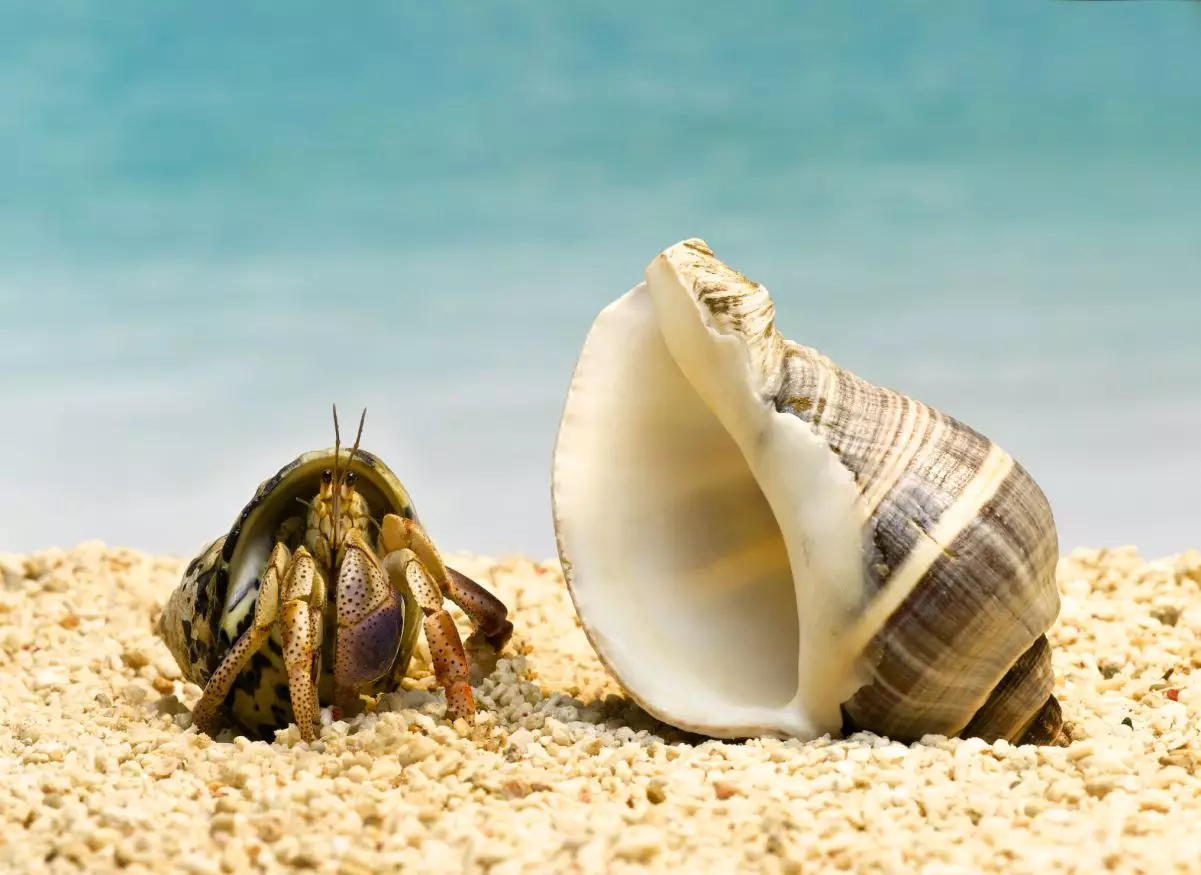Hermit crabs display fascinating behaviors, one of the most significant being their molting process. As these crustaceans grow, they shed their exoskeleton periodically, a phenomenon vital to their development. However, this natural process can confuse many hermit crab owners, leading to misinterpretations of their pets’ conditions. It is essential for owners to understand the signs of molting versus those indicating that a hermit crab has died, as this knowledge can drastically affect the health and survival of their pets.
The Appearance Dilemma: Molting vs. Death
One of the most challenging aspects of hermit crab care is recognizing when a crab is merely molting. A molting hermit crab often appears limp, lifeless, and frequently may be found protruding partially from its shell. While their lethargic appearance may lead an owner to believe the crab has perished, keen observation might reveal subtle movements—a twitch of an appendage, for instance—indicating that the crab is still alive. This confusion is exacerbated if a crab has buried itself in the substrate for a prolonged period. Owners may wonder if the animal is in the process of molting or has succumbed to illness or stress.
Given this uncertainty, the reactive approach an owner chooses can significantly impact the well-being of the hermit crab. When faced with a seemingly lifeless crab, the default assumption should be that the creature is molting until proven otherwise. Disturbing a hermit crab during this critical phase can lead to severe consequences, including the premature termination of the molting process, which is essential for the crab’s growth and health.
In situations where a hermit crab is suspected to be molting, especially if it’s located within an isolation tank, the best course of action is to leave it undisturbed while monitoring its condition. Should the crab be within a shared habitat with other hermit crabs, it’s wise to create a protective barrier. A simple method involves cutting the ends off a two-liter bottle and burying it in the sand around the crab, effectively providing a shield from potential harassment by other tank mates.
It is crucial that owners resist the temptation to handle the crab directly during this time. A crab that is partly out of its shell requires a serene environment to successfully undergo its molt. If the crab is, in fact, alive, it will continue this natural process uninterrupted. Should it unfortunately have died, telltale signs usually emerge within a few days, such as an unpleasant odor. Thus, if an owner maintains a careful watch, they can ascertain the crab’s status within a reasonable timeframe, as the molting process can take up to two months for larger crabs, while smaller ones will take considerably less time.
Investigating Suspicious Shell Changes
Sometimes, crab owners may encounter what they think is a dead crab, only to discover that it is, in fact, an old exoskeleton. Distinguishing between a living crab and its discarded shell is a matter of closely inspecting the object—if it feels hollow and crumbles easily, the crab has already successfully completed its molt and has vacated the old shell. It can be rewarding to quickly check nearby shells for the molted crab, which often eagerly seeks out new homes after shedding its previous exoskeleton.
On the other hand, when a hermit crab is buried in sand, identifying its status becomes trickier. Owners should examine the surrounding area and look for trails or markings in the substrate, which would indicate that the crab is active during the night. If, after an extended absence, uncertainty remains, gently sweeping away sand and checking for any foul smells can provide insight into the crab’s condition. It is imperative to approach this cautiously and monitor signs of abnormal behavior.
In any case where health issues present themselves—such as lethargy that persists beyond a few days, or if the living conditions seem inadequate—consulting a veterinarian is always recommended. A qualified professional can offer tailored advice, having access to the crab’s health history and overall treatment needs. Ultimately, a healthy approach requires both attentiveness and action when necessary to ensure the well-being of hermit crabs, which thrive under proper conditions and care.
The distinction between a molting hermit crab and one that has passed can mean the difference between life and death for these unique pets. By understanding their behavior during the molting process, providing them with an environment conducive to this natural occurrence, and seeking help when needed, owners can foster healthier, more vibrant hermit crab ecosystems in their homes.

